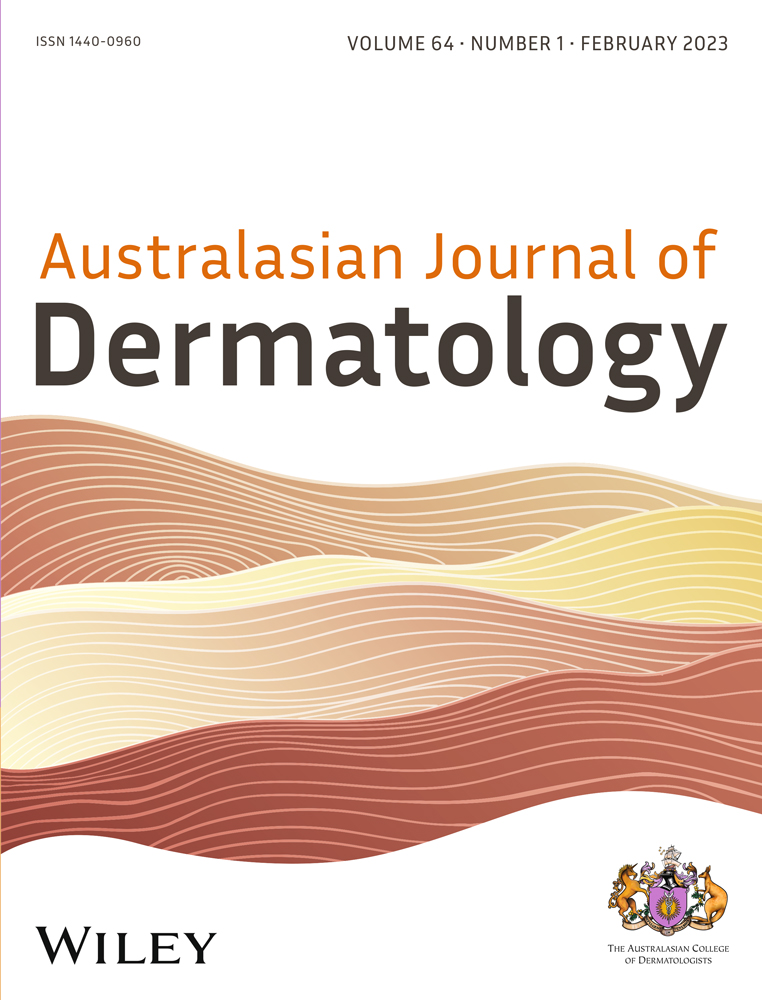Reflectance confocal microscopy in Australia: Perspectives on barriers to implementation and uptake
Dear Editors,
Reflectance Confocal Microscopy (RCM) is a diagnostic tool for analysing lesions in vivo without the need for biopsy. RCM has been demonstrated to reduce the need for unnecessary biopsies of suspected skin cancers and increase diagnostic accuracy compared with dermoscopy alone, particularly for equivocal lesions.1, 2 A recent randomised trial reported adjunctive RCM compared with expert standard care had higher positive predictive values, lower benign to malignant ratio and reduced the number needed to excise by 43%.3 RCM is used widely in Europe and the United States. The U.S. Centers for Medicare and Medicaid granted reimbursement codes for acquisition, interpretation and reports in 2017. From 2017 to 2019, there has been a dramatic increase in RCM payments (105%) and clinicians conducting RCM (63%).4 Despite Australia having the highest rates of skin cancer in the world and skin cancer accounting for the largest proportion of cancer diagnoses each year,5 the uptake of novel technologies like RCM that may reduce management and diagnosis costs has been slow.
We sought to explore the reasons for relatively low uptake in Australia. Confocalists, dermatologists and policy makers with an interest or experience in RCM were asked for their perspectives on barriers to RCM uptake in Australia. Potential participants were invited via the confocal interest group of the Australasian College of Dermatologists (ACD) and the RCM meeting at the ACD annual scientific meeting. Fifteen stakeholders were asked to grade the relevance of potential barriers identified by the authors via consultation with RCM experts in Australia and internationally and to provide open comments. The findings are summarised in Table 1.
| Barrier/issue | Mean ratinga (SD) |
|---|---|
| Few experts | 4.67 (0.49) |
| Limited use of existing devices/devices limited only to centres with experts | 4.67 (0.72) |
| Resource cost (devices, infrastructure/equipment) | 4.60 (0.63) |
| Lack of formalised training in Australia | 4.53 (0.64) |
| Time costs (of training, gaining experience) | 4.53 (0.64) |
| Lack of understanding and awareness of RCM among the medical community | 4.27 (0.80) |
| Geographical barriers to specialist centres | 3.80 (1.15) |
| Lack of standardisation of image acquisition and reporting | 3.73 (0.70) |
| Medico-legal responsibilities in the setting of cancer diagnosis and acceptability of new technologies | 3.27 (1.10) |
| Patient acceptability | 2.0 (0.85) |
- a Likert scale of 1 = not relevant at all; 2 = low relevance; 3 = neutral; 4 = relevant; 5 = very relevant.
Shortage of confocal experts associated with limited centres was thought to be the two most relevant barriers. In our opinion, this is due to a combination of factors, including training barriers in an already limited pool of experts. This was followed by costs associated with the use and lack of currently available formalised training in Australia. Expanding on this in the open comment, one clinician re-iterated that ‘training is the key’, while another that ‘user confidence to decrease use of biopsy’ were needed to increase RCM use. One clinician commented that medico-legal responsibilities have been managed in other countries. All agreed that patient acceptability was of less relevance, and one clinician commented that patients are already very willing to use RCM. Two comments included the lack of Medicare reimbursement. One clinician commented as well on the importance, in order, of ‘device infrastructure, user competence, confidence of local clinicians in use of device and organisational support for provision of (RCM) service’.
We recognise that these barriers are not independent of each other, and cover key themes of training, expertise and confidence of users, organisational support and costs. To address these, research into innovative service/training delivery models and cost-effectiveness in an Australian setting will be crucial to guide policy and practice. Structured education is required to ensure the high quality of RCM delivery and to justify a Medicare rebate and/or cost to the patient. These will further add to the sustainable implementation of the technology. Ongoing evaluation of the implementation of RCM in Australia is required.
AUTHOR CONTRIBUTIONS
GH, AS, AE, LM and PG contributed to the conception and design; GH, BM, HC, LM and PG contributed to the acquisition and interpretation of data; all authors were involved in drafting and revising the manuscript. All authors have given final approval of the version to be published and agree to be accountable for all aspects of the work.
ACKNOWLEDGEMENTS
The authors would like to thank all the clinicians who provided their perspectives in this letter and they have consented for their opinions to be published. Open access publishing facilitated by The University of Sydney, as part of the Wiley - The University of Sydney agreement via the Council of Australian University Librarians.
FUNDING INFORMATION
GH is supported by NHMRC CRE funding (#1135285). LKM is supported by the Warwick L Morison Professorship of Dermatology, UNSW. AEC is supported by an NHMRC Investigator Grant #2008454.
CONFLICT OF INTEREST
The authors have no conflict of interest to declare.
Open Research
DATA AVAILABILITY STATEMENT
Data sharing is not applicable to this article as no new data were created or analysed in this study. Ethics committee approval was not sought as the authors did not feel that there were ethical risks in this communication.




